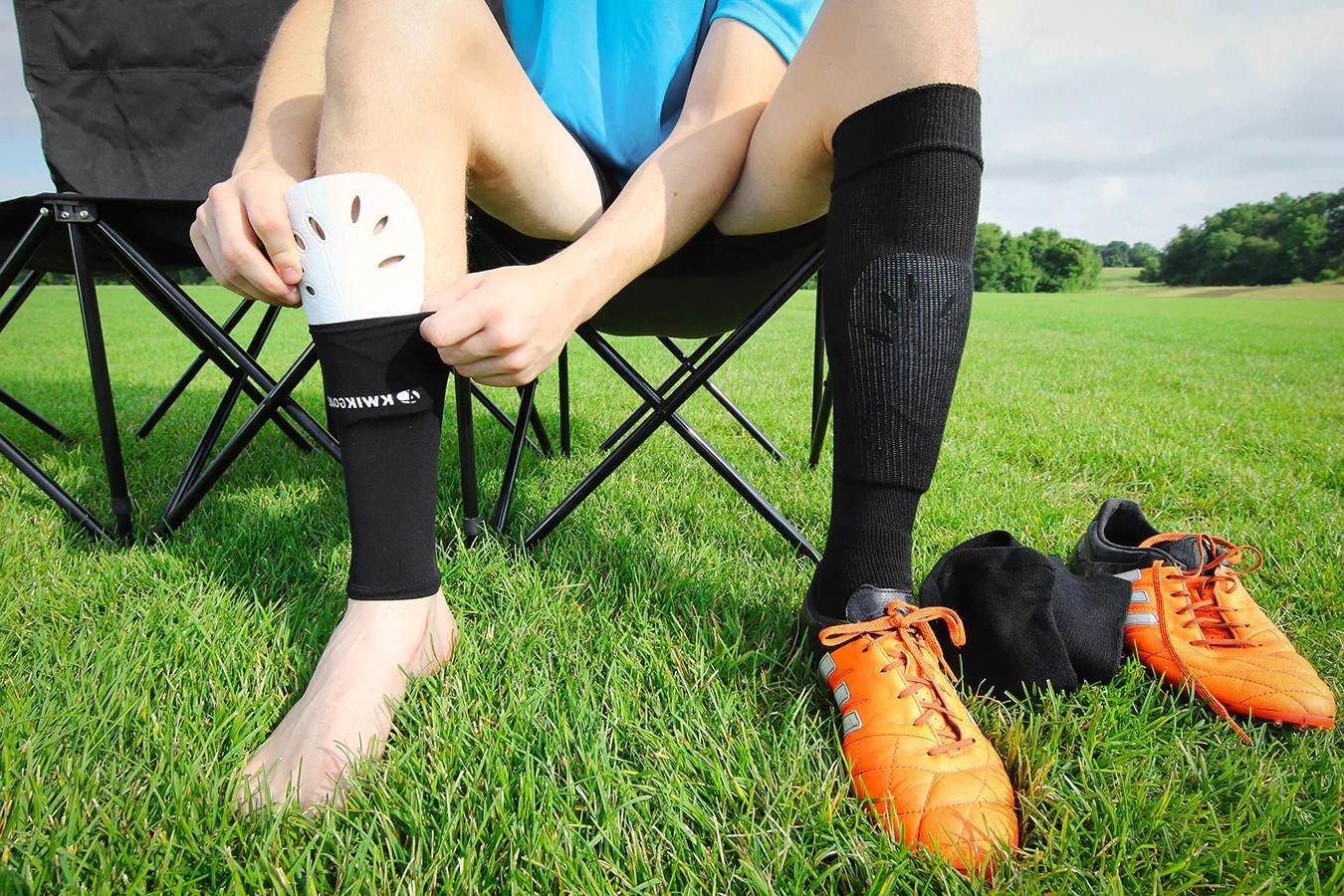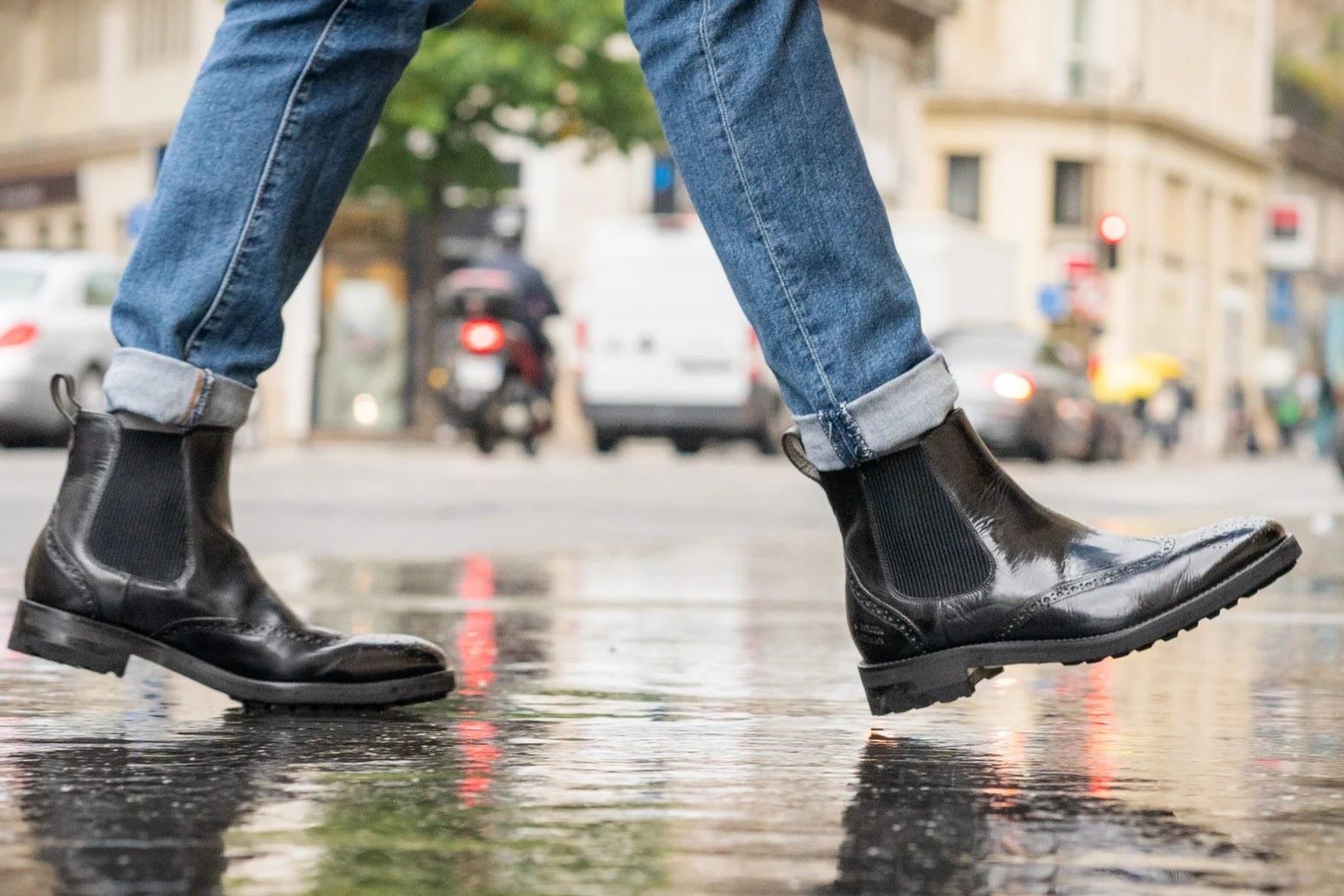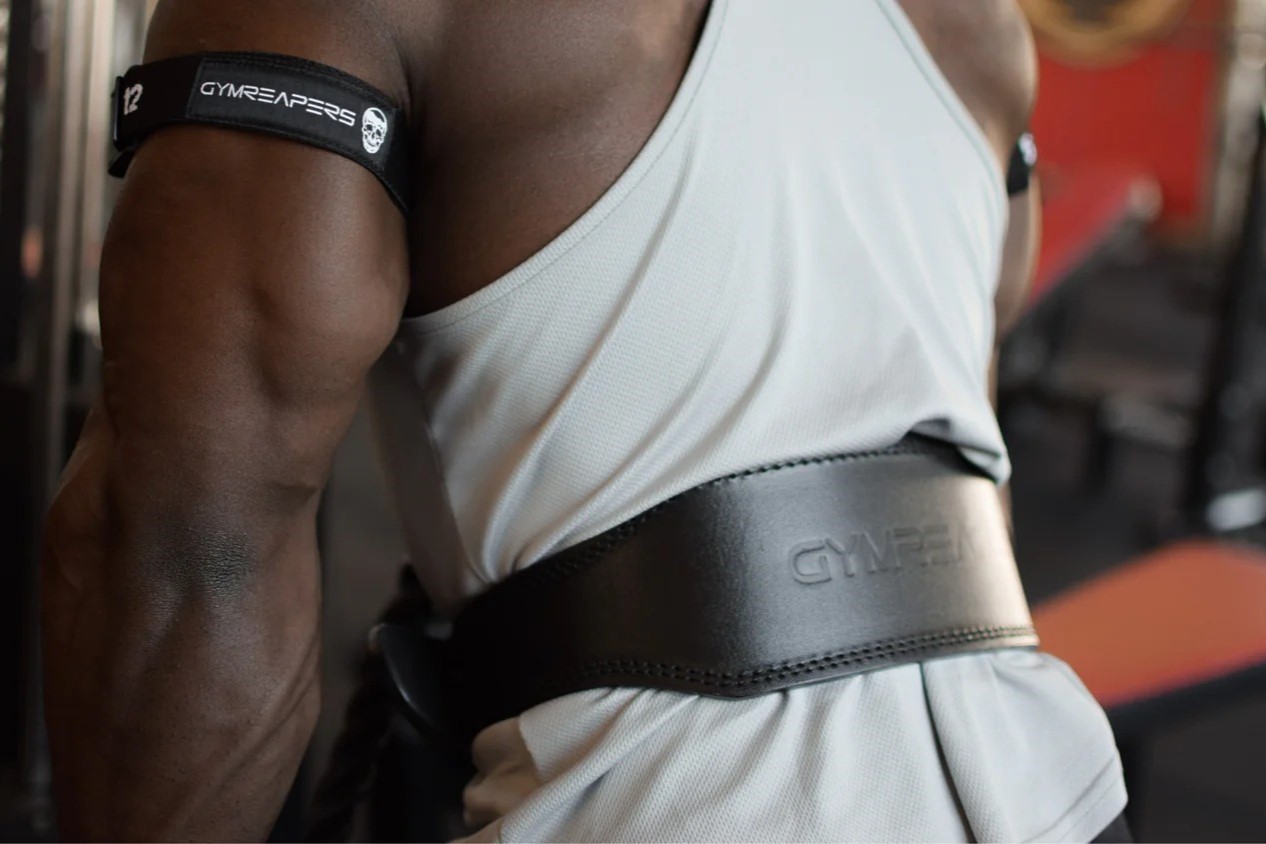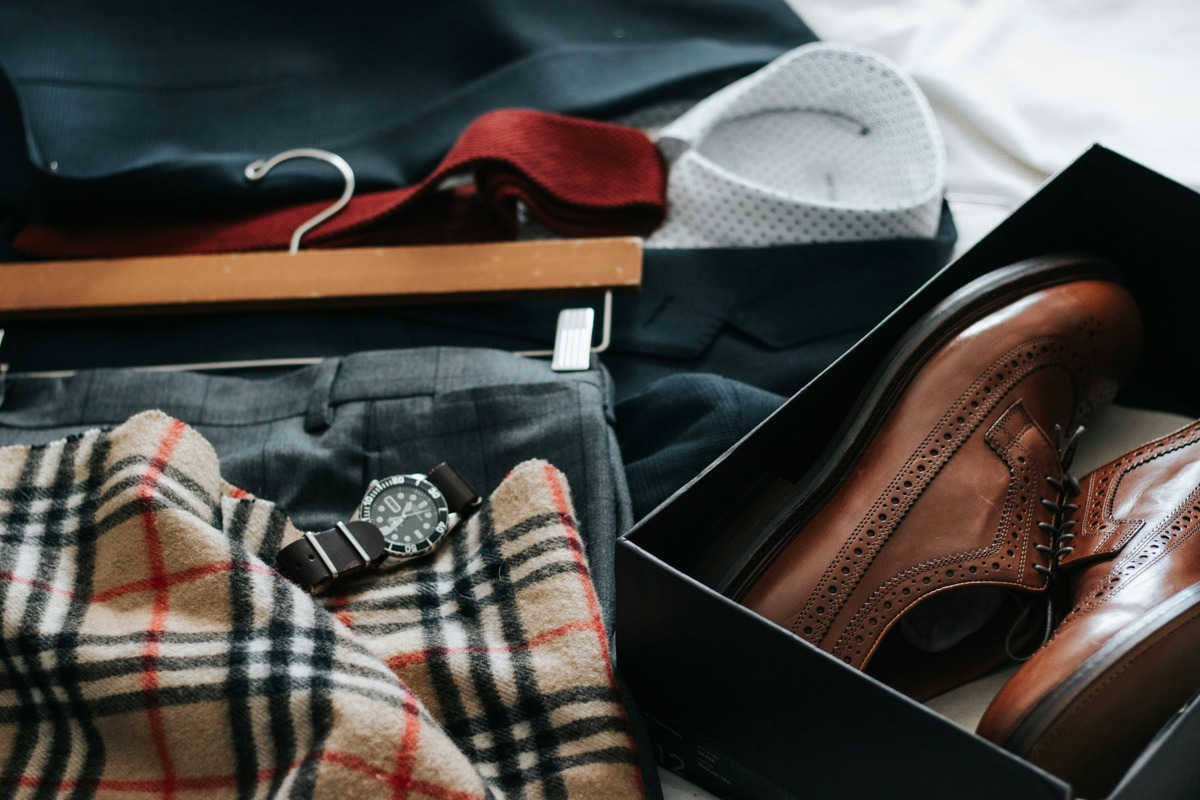

Sports
How To Wear Shin Guards
Published: February 26, 2024
Learn the proper way to wear shin guards for sports to protect your legs and enhance your performance. Follow these tips for a comfortable and secure fit.
(Many of the links in this article redirect to a specific reviewed product. Your purchase of these products through affiliate links helps to generate commission for Noodls.com, at no extra cost. Learn more)
Table of Contents
Introduction
Shin guards are an essential piece of protective gear for athletes engaged in contact sports, particularly soccer, field hockey, and rugby. These guards are designed to safeguard the lower legs from potential injuries caused by collisions, tackles, and stray kicks during intense gameplay. While they may seem like a simple accessory, the significance of wearing shin guards cannot be overstated. In this comprehensive guide, we will delve into the various aspects of shin guards, including their importance, types, sizing, and the correct method of wearing them. Whether you're a seasoned athlete or a novice player, understanding the role of shin guards and how to properly utilize them is crucial for both safety and performance on the field. So, let's explore the world of shin guards and equip ourselves with the knowledge to make informed decisions about this vital piece of sports equipment.
Read more: How To Wear Airpods
Importance of Shin Guards
Shin guards are not merely an accessory; they are a fundamental component of an athlete's protective gear. The lower legs, specifically the shins, are highly susceptible to impact and injury during sports activities. Without adequate protection, players are at risk of sustaining painful bruises, cuts, and even more severe injuries such as fractures or contusions. Shin guards act as a shield, absorbing and dispersing the force of impact, thus reducing the likelihood of injury.
In sports like soccer, where swift movements, sudden tackles, and airborne balls are commonplace, the risk of accidental collisions is inherent. Without shin guards, players would be vulnerable to painful blows and potential long-term damage to the delicate bones and tissues in the lower leg. Additionally, in field hockey, the use of a hard ball and the swinging motion of the sticks further underscores the necessity of shin guards to prevent serious harm.
Moreover, shin guards not only protect the wearer but also contribute to the overall safety of the game. By minimizing the risk of injury, players can focus on their performance and gameplay, leading to a more enjoyable and competitive sporting experience for all involved.
In organized sports leagues and competitions, the use of shin guards is often mandatory due to their crucial role in injury prevention. This underscores the universal recognition of their importance in safeguarding athletes during physical activities.
In essence, the significance of shin guards cannot be overstated. They are a vital safeguard that provides peace of mind to athletes, enabling them to pursue their passion for sports with confidence and security. Whether on the soccer field, hockey rink, or rugby pitch, the presence of shin guards is a non-negotiable aspect of responsible and safe sports participation.
Types of Shin Guards
When it comes to shin guards, there is no one-size-fits-all solution. These essential pieces of protective gear come in various types, each offering distinct advantages suited to different preferences and playing styles. Understanding the different types of shin guards can help athletes make informed decisions based on their specific needs. Here are the primary types of shin guards:
-
Slip-in Shin Guards: These guards are favored for their lightweight and minimalist design. They are typically made of a thin, flexible shell that can be easily slipped into the player's socks. Slip-in shin guards provide a snug and secure fit, offering freedom of movement without compromising protection. They are a popular choice among skillful players who prioritize agility and maneuverability on the field.
-
Ankle Shin Guards: As the name suggests, these guards feature extended protection that covers not only the shins but also the ankles. This design provides comprehensive safeguarding for the lower legs, reducing the risk of impact-related injuries to both the shin and ankle areas. Ankle shin guards are particularly beneficial for players seeking additional support and stability during dynamic movements and sudden changes in direction.
-
Sleeve Shin Guards: Unlike traditional slip-in guards, sleeve shin guards are integrated into a compression sleeve, combining the benefits of both items into a single, cohesive unit. The sleeve not only holds the shin guards securely in place but also offers compression and muscle support. This type of shin guard is favored by athletes who prioritize a streamlined and hassle-free gear setup, as the sleeve eliminates the need for readjustment during play.
-
Detachable Shin Guards: These guards feature a detachable ankle piece, allowing players to customize their level of protection based on their individual preferences. The versatility of detachable shin guards makes them a popular choice for athletes who value adaptability and wish to tailor their gear to specific game scenarios or personal comfort requirements.
-
Slip-in with Compression Calf Sleeves: This innovative design combines slip-in shin guards with calf compression sleeves, offering comprehensive coverage for the lower legs. The integrated calf sleeves provide additional muscle support and promote circulation, contributing to enhanced performance and reduced fatigue during prolonged physical activity.
Understanding the characteristics and benefits of each type of shin guard empowers athletes to select the most suitable option based on their playing style, comfort preferences, and specific protective needs. Ultimately, the right choice of shin guards can significantly enhance an athlete's confidence, safety, and performance on the field.
Choosing the Right Size
Selecting the appropriate size of shin guards is paramount to ensuring optimal protection and comfort during sports activities. Ill-fitting shin guards can compromise both safety and performance, making it essential for athletes to carefully consider sizing factors when making their selection. Here's a detailed look at the key considerations for choosing the right size of shin guards:
Length and Coverage
The length of the shin guard is a critical aspect to consider. It should adequately cover the entire shin bone, extending from just below the knee to above the ankle. Proper coverage ensures comprehensive protection against impact and potential injuries. When trying on shin guards, athletes should assess whether the guards align with the length of their lower legs, providing sufficient coverage without impeding natural movement.
Read more: How To Tape For Shin Splints
Width and Fit
In addition to length, the width of the shin guards plays a crucial role in determining the overall fit. The guards should snugly contour to the shape of the lower leg without being too tight or restrictive. A proper fit ensures that the guards remain securely in place during intense physical activity, preventing unnecessary shifting or discomfort. Athletes should look for shin guards that offer a balanced fit, providing ample coverage without feeling overly constrictive.
Sizing Charts and Guidelines
Many reputable sports equipment manufacturers provide sizing charts and guidelines to assist athletes in selecting the right shin guard size. These resources typically outline the measurements and corresponding size options, enabling athletes to match their leg dimensions with the most suitable guard size. By referencing these charts, athletes can make informed decisions and choose shin guards that align with their specific leg measurements, ensuring a personalized and comfortable fit.
Consideration for Ankle Protection
For athletes opting for ankle shin guards or guards with extended ankle coverage, it is essential to ensure that the ankle portion fits securely and provides ample support without restricting movement. Ankle protection should be evaluated in conjunction with the overall fit of the shin guards, ensuring that both the shins and ankles receive adequate safeguarding without compromising mobility.
Flexibility and Adjustability
Athletes should assess the flexibility and adjustability of the shin guards to determine how well they conform to the contours of their legs. Flexible guards that mold to the shape of the lower leg offer enhanced comfort and a more customized fit. Additionally, guards with adjustable straps or closure systems allow athletes to fine-tune the fit according to their preferences, contributing to a personalized and secure wearing experience.
By considering these factors and prioritizing the correct size, athletes can optimize their protective gear for superior safety and performance on the field. Choosing the right size of shin guards is a proactive step towards ensuring a comfortable and secure fit, empowering athletes to focus on their game with confidence and peace of mind.
Read more: How To Wear Graduation Hood
How to Wear Shin Guards
Wearing shin guards correctly is crucial for maximizing their protective benefits and ensuring optimal comfort during sports activities. The following step-by-step guide outlines the proper method of wearing shin guards to provide athletes with comprehensive safeguarding for their lower legs.
-
Prepare the Lower Legs: Before wearing shin guards, it is essential to ensure that the lower legs are clean and dry. Removing any excess moisture or debris from the skin helps in preventing discomfort and irritation during prolonged wear.
-
Positioning the Shin Guards: Place the shin guards against the front of the lower legs, aligning them with the shin bones. The guards should cover the shins from just below the knees to above the ankles, providing comprehensive protection against impact and potential injuries.
-
Securing the Guards: Depending on the type of shin guards, secure them in place using the designated closure system. This may involve fastening adjustable straps, securing hook-and-loop closures, or ensuring a snug fit within compression sleeves. The guards should remain firmly in position without impeding natural movement or causing discomfort.
-
Ensuring Proper Alignment: Verify that the shin guards are aligned symmetrically on both legs, ensuring uniform coverage and protection. Proper alignment minimizes the risk of uneven impact distribution and ensures consistent safeguarding for both lower legs.
-
Testing Mobility: After securing the shin guards, perform a few light movements such as walking, jogging, or mimicking sports-specific actions to assess comfort and mobility. The guards should remain securely in place without causing restriction or discomfort during dynamic movements.
-
Integrating with Socks and Cleats: Once the shin guards are properly positioned and secured, pull the socks over the guards to hold them in place. It is important to ensure that the socks do not cause the guards to shift or become misaligned. Finally, put on the cleats to complete the gear setup.
By following these steps, athletes can effectively wear their shin guards in a manner that optimizes protection, comfort, and mobility. Properly worn shin guards provide athletes with the confidence to engage in intense physical activities, knowing that their lower legs are well-protected against potential impact-related injuries.
This detailed guide empowers athletes to approach the process of wearing shin guards with precision and attentiveness, ensuring that they derive maximum benefit from this essential piece of protective gear. Whether on the soccer field, hockey rink, or rugby pitch, the correct wearing of shin guards is a proactive measure that contributes to a safe and secure sports experience for athletes of all levels.
Tips for Proper Fit
Achieving a proper fit for shin guards is pivotal in ensuring optimal protection, comfort, and performance during sports activities. Here are essential tips to consider for attaining the ideal fit of shin guards:
-
Prioritize Coverage: When selecting shin guards, prioritize comprehensive coverage that extends from just below the knee to above the ankle. Adequate coverage ensures that the vulnerable lower leg area is fully safeguarded against potential impact and injuries.
-
Evaluate Comfort and Mobility: While trying on shin guards, assess the level of comfort and mobility they offer. The guards should contour to the shape of the lower leg without causing discomfort or restricting natural movement. Optimal comfort and unrestricted mobility are key indicators of a well-fitting pair of shin guards.
-
Secure, Yet Non-Restrictive Fit: Look for shin guards that offer a secure fit without feeling overly constrictive. The guards should remain firmly in place during physical activity, preventing unnecessary shifting or discomfort while allowing for unrestricted movement and agility on the field.
-
Consider Ankle Support: For athletes opting for ankle shin guards or guards with extended ankle coverage, ensure that the ankle portion fits securely and provides ample support without hindering mobility. Ankle protection should seamlessly integrate with the overall fit of the shin guards, offering comprehensive safeguarding for both the shins and ankles.
-
Customize with Adjustable Straps: If the shin guards feature adjustable straps or closure systems, take advantage of these customization options to fine-tune the fit according to personal preferences. Adjustable straps allow athletes to achieve a personalized and secure fit, enhancing the overall wearing experience.
-
Test for Stability: After securing the shin guards, perform a few dynamic movements to test their stability. The guards should remain securely in place without causing discomfort or impeding agility. Stability is a key factor in ensuring that the guards provide consistent protection during intense physical activities.
-
Refer to Sizing Charts: Utilize sizing charts and guidelines provided by reputable sports equipment manufacturers to match leg measurements with the most suitable guard size. These resources offer valuable insights into selecting the right size of shin guards, ensuring a personalized and comfortable fit tailored to individual leg dimensions.
By adhering to these tips, athletes can make informed decisions and select shin guards that offer a personalized, secure, and comfortable fit. Prioritizing the proper fit of shin guards is a proactive step towards enhancing safety, confidence, and performance on the field, ultimately contributing to a positive and secure sports experience.
Conclusion
In conclusion, the significance of shin guards in contact sports cannot be overstated. These essential pieces of protective gear play a pivotal role in safeguarding athletes from potential impact-related injuries to the lower legs. By absorbing and dispersing the force of impact, shin guards provide a vital layer of protection, allowing players to engage in intense physical activities with confidence and security.
Understanding the importance of wearing shin guards correctly is fundamental for athletes at all levels. Whether on the soccer field, hockey rink, or rugby pitch, the adoption of proper protective measures contributes to a safe and enjoyable sports experience for all participants. From minimizing the risk of painful bruises to mitigating the potential for more severe injuries such as fractures or contusions, shin guards serve as a crucial barrier against the inherent physical demands of contact sports.
Moreover, the diverse types of shin guards available cater to the varied preferences and playing styles of athletes. Whether opting for slip-in guards, ankle guards, sleeve guards, detachable guards, or innovative designs with integrated calf sleeves, athletes have the flexibility to select the most suitable option based on their specific protective and comfort requirements.
Choosing the right size of shin guards is a proactive step that empowers athletes to optimize their protective gear for superior safety and performance on the field. By considering factors such as length, width, ankle protection, flexibility, and adjustability, athletes can ensure a personalized and comfortable fit that aligns with their individual leg dimensions and playing style.
The proper method of wearing shin guards, as outlined in this guide, ensures that athletes derive maximum benefit from this essential piece of protective gear. By following the step-by-step process and adhering to tips for achieving a proper fit, athletes can approach the wearing of shin guards with precision and attentiveness, enhancing their confidence and mobility during sports activities.
In essence, the use of shin guards is not only a matter of compliance with sports regulations but a proactive commitment to personal safety and well-being. By prioritizing the correct wearing and fit of shin guards, athletes can elevate their sports experience, focusing on their performance and gameplay with the assurance of comprehensive protection for their lower legs.
Ultimately, the adoption of proper protective measures, including the use of well-fitted and correctly worn shin guards, contributes to a positive and secure sports environment, allowing athletes to pursue their passion for sports with confidence, safety, and peace of mind.













